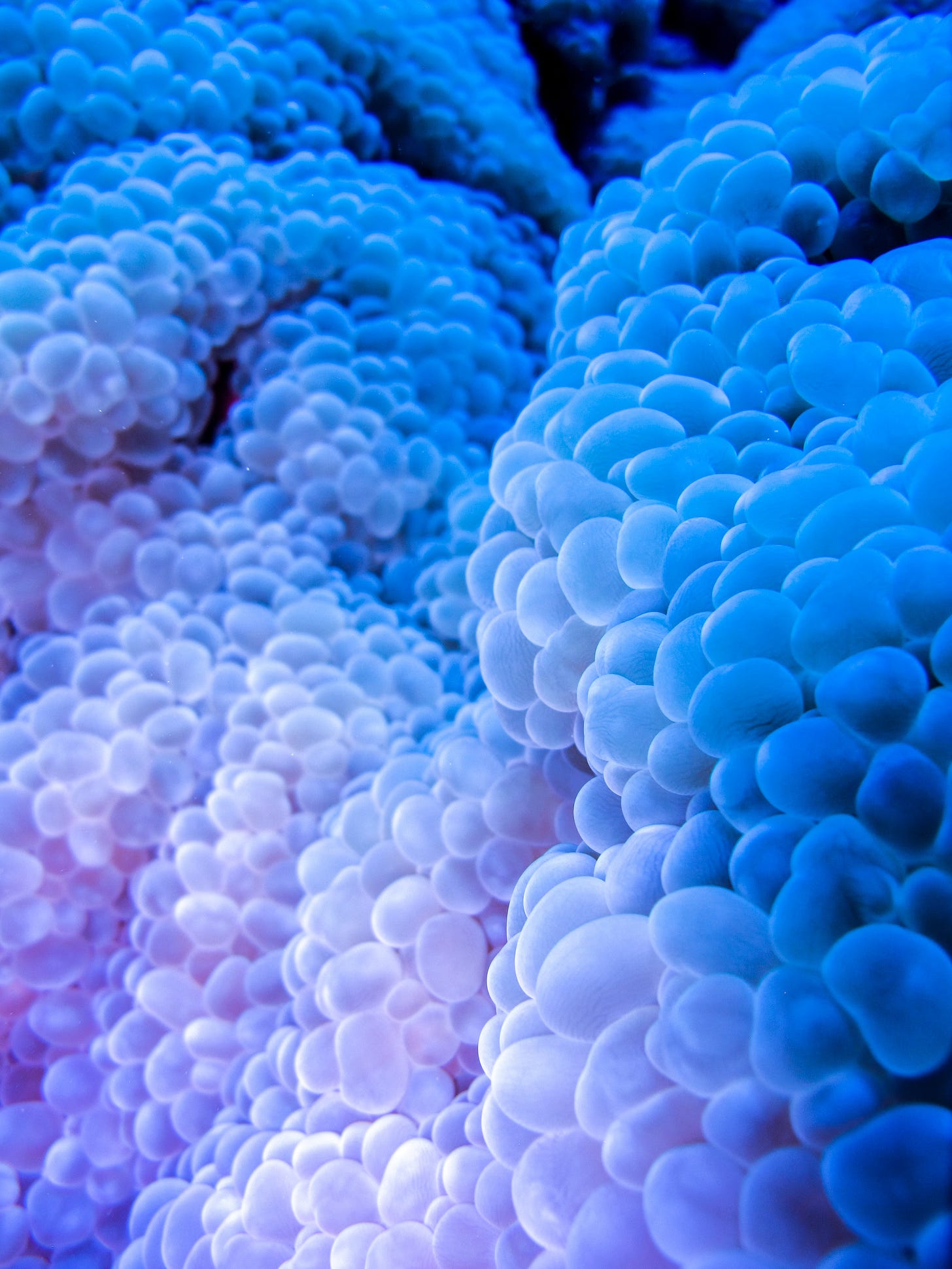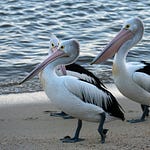Hey,
I hope you’re okay. It’s been a down couple of weeks for me. Been battling impostor syndrome thoughts a lot. I think very often of the mental battles we all have but rarely get to share with others.
I’m considering seeing a therapist soon. We all probably should. What I’ll like to say though is that when you’re facing these down days, remember that it’s normal and you’re not the only one going through it. Most people are.
My fix for my impostor syndrome is to remember my affirmations and taking action. I’ve learned that action breeds confidence. Drowning yourself in thoughts of things that aren’t going well doesn’t. Share how you’re feeling with your loved ones too. Many times, a conversation is all that we need.
I’ve been considering writing these letters every 2 weeks to allow more time for research. I’ve not decided yet but will update y’all.
As always, stay Jiggy and never lose your curiosity.
(PS - My brother’s 1-year memorial is this Saturday. Say a prayer for him if you can. May the soul of all our lost loved ones rest in perfect peace)
Want to receive notifications via WhatsApp when I send these letters out? Share your phone number here
Got a musing you think I should explore in my letters? Share it with me here and I might just write about it.
I've recently been intrigued by the ocean and aquatic life. 71% of the world is covered by water. 97% of this water is found in oceans. An estimated 50-80% of all life on earth is in the ocean and we are yet to map more than 80% of the ocean.
It's very intriguing how many different types of species, life and the like exist in the depth of oceans. Most humans can't go deeper than 50 meters in the ocean with supporting equipment and the deepest part of the ocean is over 11 kilometres deep. So except we advance our technology incredibly soon, things might remain the same.
I'm interested in learning about how sea levels have changed over the past thousands of years and how that has affected life on earth and in oceans. I'll be exploring that in future letters. Today though, we'll take a close look at the largest living structure in the world.
I first learnt about these entities when I mistakenly stumbled upon a Netflix documentary: Chasing Coral.
I discovered that corals are large colonies of little organisms that connect to each other to create some of the most beautiful and largest structures in the world.
A Coral Reef
A coral is a beautiful organism that is made up of an animal, a plant and minerals. A coral head is made up of a group of small animals (as small as a pinhead sometimes) called polyps. These polyps have a symbiotic relationship with a specific type of algae called zooxanthellae.
(The tips that look like tentacles contain polyps. The green dots you see are algae. The white base is the carbonated mineral)
The algae can photosynthesise and provide food to the polyps in form of carbon dioxide. The corals in turn protect the algae. The algae are also responsible for the different coral colours we see. The beauty though is that these polyps can reproduce very quickly and they connect with other colonies of corals. As they grow, they secrete exoskeletons that can spread out over a large area.
The growth of these corals combined with their exoskeletons and the connection of multiple coral colonies create coral reefs. These reefs are usually found in the shallow parts of the ocean so that their algae can get access to sunlight and photosynthesize.
(A coral reef. Image source)
They'll typically be found in coastal areas off a seashore and close to a landmass. They are also often present on the many islands across the world. There are other types of corals that exist deeper in the ocean but they don't have algae because light doesn't reach those streets in the ocean. Our focus is on reef-forming corals.
Their importance
In addition to the sheer beauty of these organisms, they play a critical role in the world's ecosystem. Despite the fact that they occupy just 0.1% of the ocean's area, coral reefs are home to 25% of marine life. One-quarter! An estimated 500 million people earn their livelihoods from the fishing stocks and tourism opportunities reefs provide.
(A fish in its coral home. Image source)
The largest coral reef in the world (and the largest living structure) is the Great Barrier Reef in Australia. It is composed of over 2,900 individual reefs and 900 islands stretching for over 2,300 kilometres over an area of approximately 344,400 square kilometres.
It is estimated to have a social, economic and iconic value of $56B and contributes about $6.4B to Australia's economy every year. The reef is estimated to be over 20,000 years old.
(The Great Barrier Reef. Image source)
Seven Interesting Reef Facts
The Great Barrier Reef is so large that it can be seen from space!
Individual colonies of corals can often live decades to centuries.
The annual global economic value of coral reefs has been estimated at anywhere from US$2.7 trillion (a 2020 estimate) to US$9.9 trillion (a 2014 estimate)
Corals date back 400 million years.
Coral reefs protect shorelines by absorbing wave energy, and many small islands would not exist without reefs. Coral reefs can reduce wave energy by 97%, helping to prevent loss of life and property damage.
An estimated 197 million people who live both below 10 m elevation and within 50 km of a reef consequently may receive risk reduction benefits from reefs.
About six million tons of fish are taken each year from coral reefs. Southeast Asia's coral reef fisheries alone yield about $2.4 billion annually from seafood.
I found it interesting that coral reefs thrive in the parts of the ocean with little nutrients. For a long while, scientists didn't know why this was the case. We've now learnt that this is because high levels of nitrogen and phosphate are harmful to corals. Algae and seaweed love these chemicals and because they grow faster than corals, they can outcompete them.
Therefore, corals thrive in areas of the ocean with little nutrients. However, because of the ecosystem of aquatic life they enable, they have built a system to recycle the nutrients that they need.
These beautiful reefs are under severe threat though. In addition to threats like overfishing, invasive species and pollution. Increasing ocean temperatures and ocean acidification is causing mass coral bleaching across the world.
Coral bleaching is a situation in which due to higher or lower temperatures than they're normally used to, corals become white like you can see in the image below.
(A normal reef on the left and a bleached coral on the left)
What is actually happening is that increased temperatures cause the algae within them to lose their ability to photosynthesize. The corals then spot that something is wrong with their system and just like our human body fights against bacteria when we spot them, the coral begins to fight against the algae.
They flush the algae from their system losing their colour and the very thing that gives them food. You can think of the corals as being sick during this phase. If temperatures don't return to the usual range soon enough, the corals wither and die.
(Imagine these beauties dying. Image source)
It is estimated that coral reefs have declined by 50% since 1950, partly due to sensitive water conditions. 14% of this decline happened between 2009 and 2018, showing that the rate of decline is increasing.
As global warming increases on our planet, these reefs that house 25% of our aquatic life are in danger of becoming extinct. As a reef dies, the fish and lifeforms that depend on it lose their protection and house, eventually dying off as well. A bleak prediction by scientists says that by 2085, ocean conditions will be acidic enough for corals around the globe to begin to dissolve.
I don't even want to imagine a world where they don't exist. Our ocean loses some of its most beautiful creatures. 500 million people (in today's numbers) lose their source of livelihood. Our shores and coastlines are more vulnerable to storms and waves because the reefs are dead. And many more.
(A dying reef. Image source)
The ocean absorbs over 90% of our planet's heat mostly created by human-generated greenhouse gas. If we don't mitigate climate change, we might lose our shallow coral reefs by the next century.
We can play a role. Spread the word about these beautiful creatures. Reduce the use of fertilizers where possible. Conserve energy as much as you can. Advocate for climate change reduction initiatives. Visit a coral reef if you can.
(Image source)
As mammals, we spend most of our life on the surface of the earth. We're unaware of the life systems in the water and the role they play in enabling our life on land. Our oceans are important and we should treat them as such.
I think a great way to start your week will be by going through the beautiful pictures of coral reefs on Unsplash and sharing this letter with your friends. Pure beauty.
This letter was written while listening to Egedege by Larry Gaga (ft, Pete Edochie, Theresa Onuorah, Flavour & Phyno)
Additional Reading
Coral Reefs - Wikipedia.
Coral Reefs & Corals - Smithsonian Ocean
There is much beauty in the world. We should learn about it and explore it as much as we can during our time on earth. - Francis Sani.
Love always,
Francis.
![Musings in My Head [MIMH]](https://substackcdn.com/image/fetch/$s_!CSau!,w_80,h_80,c_fill,f_auto,q_auto:good,fl_progressive:steep,g_auto/https%3A%2F%2Fbucketeer-e05bbc84-baa3-437e-9518-adb32be77984.s3.amazonaws.com%2Fpublic%2Fimages%2F70030068-5442-485e-9273-b1c22725e34f_200x200.png)

![Musings in My Head [MIMH]](https://substackcdn.com/image/fetch/$s_!CSau!,w_36,h_36,c_fill,f_auto,q_auto:good,fl_progressive:steep,g_auto/https%3A%2F%2Fbucketeer-e05bbc84-baa3-437e-9518-adb32be77984.s3.amazonaws.com%2Fpublic%2Fimages%2F70030068-5442-485e-9273-b1c22725e34f_200x200.png)
![Musings in My Head [MIMH]](https://substackcdn.com/image/fetch/$s_!tMBS!,w_152,h_152,c_fill,f_auto,q_auto:good,fl_progressive:steep,g_auto/https%3A%2F%2Fbucketeer-e05bbc84-baa3-437e-9518-adb32be77984.s3.amazonaws.com%2Fpublic%2Fimages%2Fc0b8b3c0-5198-4ed9-83ea-03f17f357e31_2135x2135.png)


















Share this post